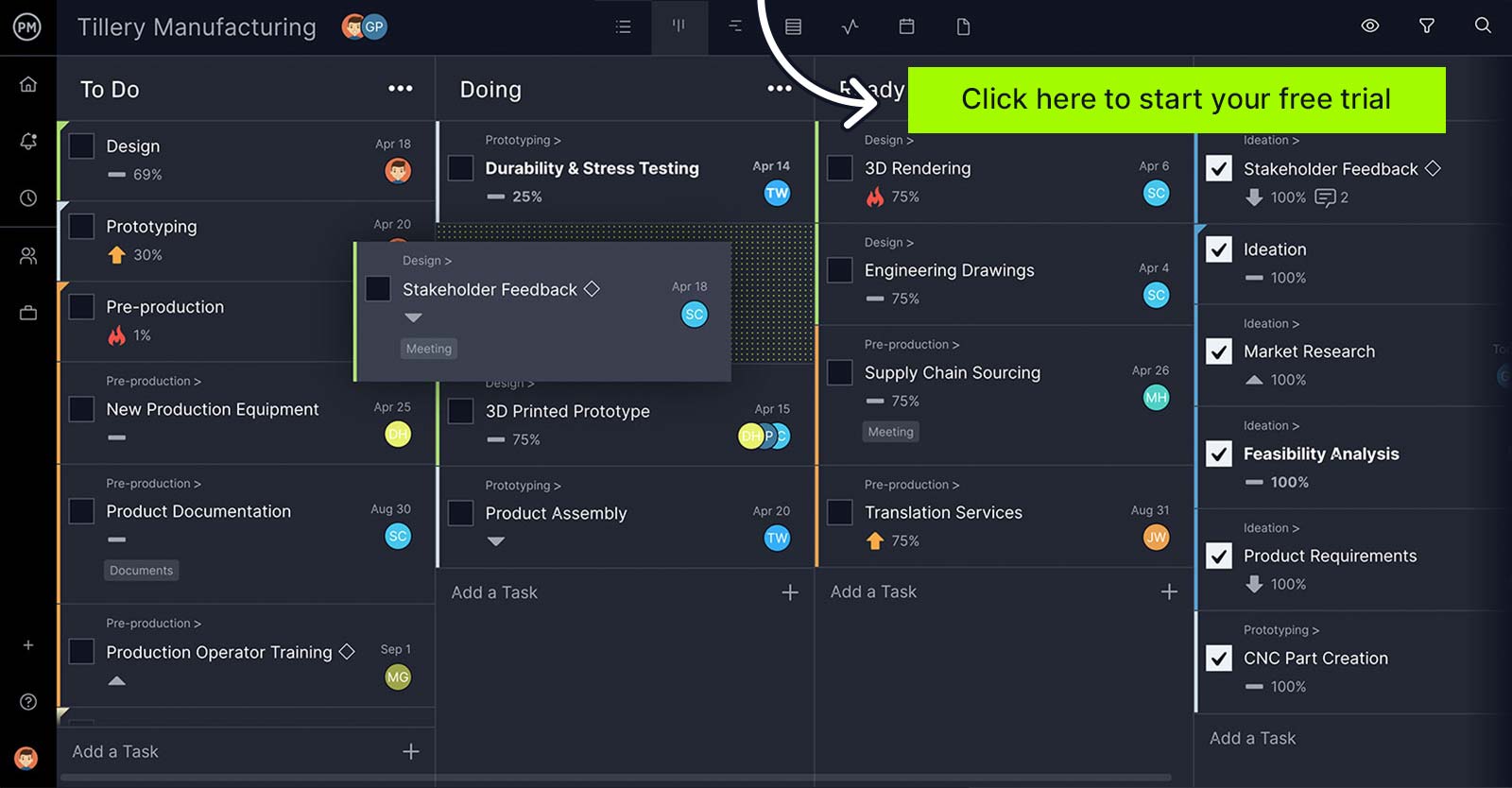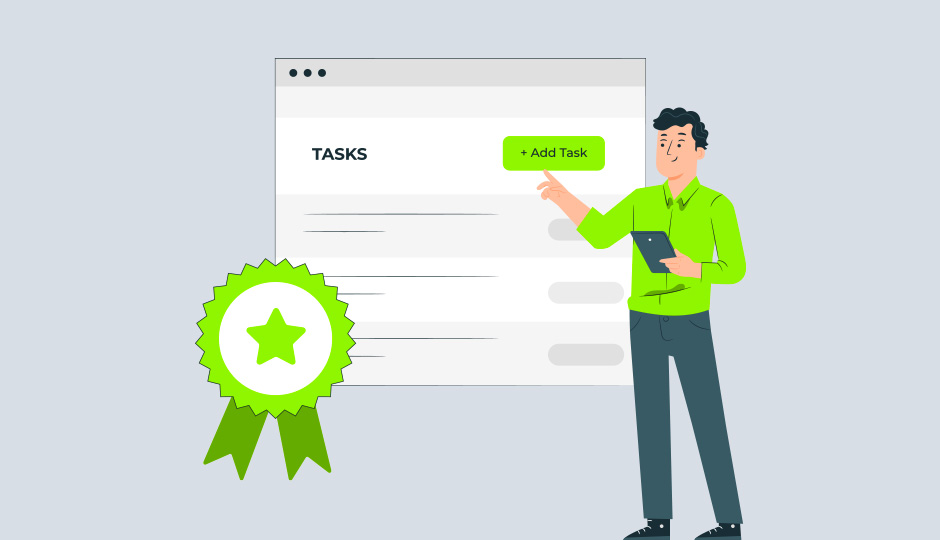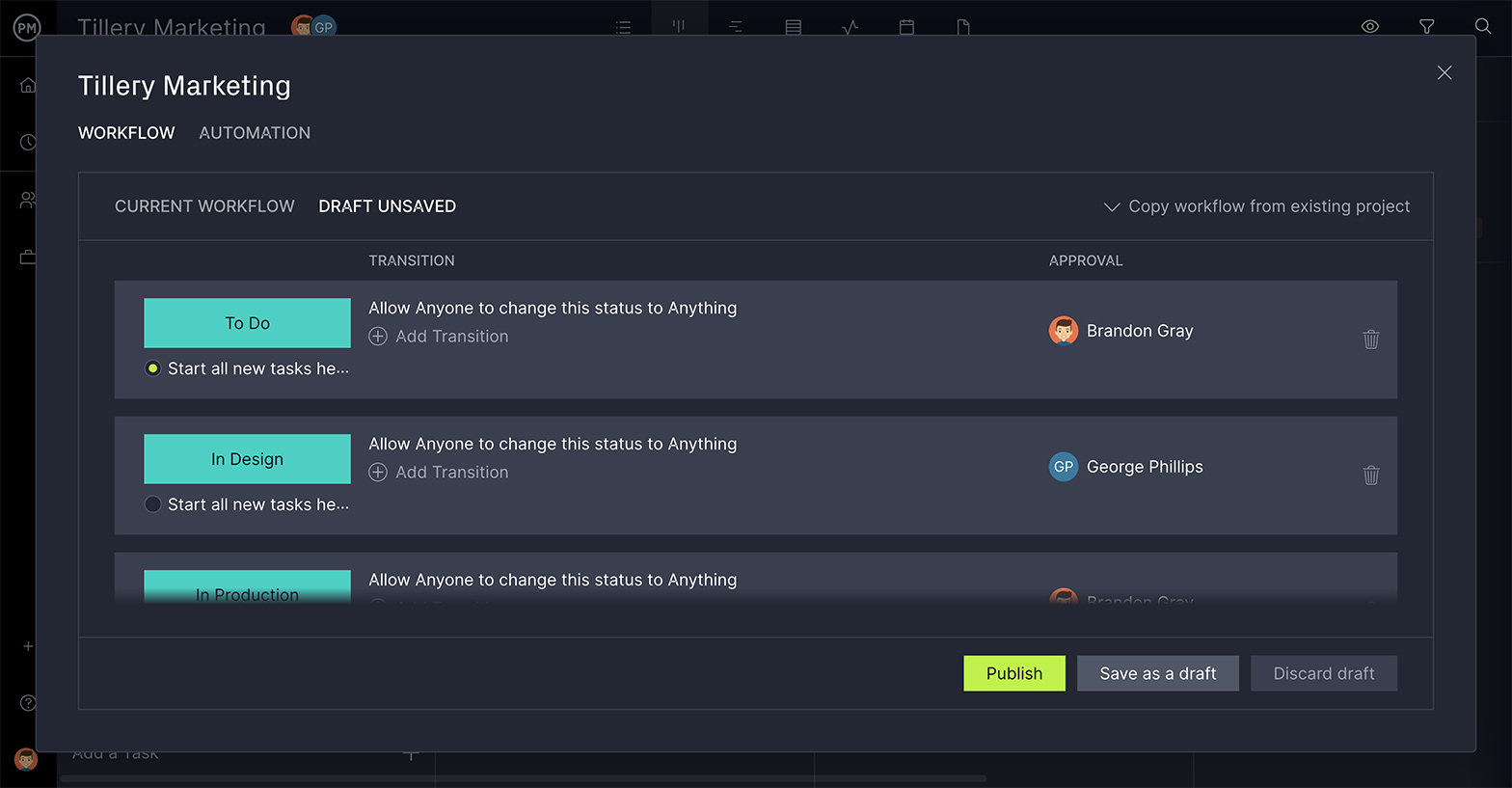Software Development projects can feel overwhelming. But when you break down large chunks of the work into smaller pieces, suddenly it’s manageable. That’s basically what any project management methodology is all about. The whole project, from start to finish, is evenly divided into phases. The software development life cycle (SDLC) is how it’s done in software development. Let’s define it, look at different models and the best way to manage SDLC.
What Is the Software Development Life Cycle (SDLC)?
The software development life cycle (SDLC) is a process by which software is developed and deployed. It’s a process that encompasses every phase of software creation, from conception to maintenance after the software is released.
There are a variety of methodologies to manage your software development life cycle, including waterfall, agile and other models. Teams select a specific methodology with the goal of producing their software as quickly and as cheaply as possible without sacrificing quality. This is achieved by choosing the right SDLC model for the context of your software development life cycle.
SDLC Phases
Regardless of the SDLC methodology that you choose, there are consistent SDLC phases that should be followed in order to successfully complete a deliverable for the client. The name of the phases might vary, but the following list summarizes the core functions of typical SDLC phases.
Project management software helps you manage every phase of the project. ProjectManager is cloud-based work and project management software that has interactive Gantt charts that break larger projects into phases that reflect the project’s life cycle. Gantts are great for organizing tasks, linking dependencies and creating milestones. Our Gantt goes further, filtering for the critical path and then allowing you to set a baseline to track your progress when you execute the project. Get started with ProjectManager today for free.

1. Requirements Gathering & Analysis
Understand the proposal put forth by the customer, and then gather their requirements for a suitable solution. Be sure to probe as much as possible to gather as much information as you can at this stage. This phase is heavily documented so that developers can revisit requirements at any time.
2. Planning & Designing
This is when you elaborate on a project plan for meeting those requirements laid out by the customer. Once you have a plan, design concrete specifications for the developers to utilize, like screen layouts and other materials. During this phase, you need to analyze the problem in the context of the organization’s policies and objectives.
3. Building
During this phase, the actual code is constructed. This can be done by a single developer, a larger team or even several teams depending on the scope of the work. Developers will need to track changes to the code and, if there are different teams working together, that they’re able to know what the others are doing. Changes should be documented, either formally or informally.
4. Testing
Now that the code has been written, it’s time to test. Usually, this is done in a special environment, so the team can check for bugs and other mistakes without being distracted by too many variables. To create this environment, software development teams need to create a test case, a document that specifies the conditions under which software features will be tested to confirm that they’re working as intended.
Our test case template can help you as you go through the software testing process.
5. Deployment
After all known errors have been eliminated, the software is deployed. This is when the product is actually put into production and released in a business environment.
6. Maintenance
During the maintenance phase, the software is maintained so that it stays effective and relevant. Tweaks can be made to the initial software so that it remains a viable solution that is free of bugs.

Get your free
Software Development Plan Template
Use this free Software Development Plan Template for Excel to manage your projects better.
SDLC Models
There are several different methodologies that can be used to execute the SDLC. Each has its own set of strengths and weaknesses. Below is a high-level explanation of a few different SDLC methodologies.
Waterfall Model
The waterfall model is the most traditional SDLC methodology. This model focuses on gathering all of the customer requirements on the front end of the project so that every step of the SDLC can be planned. Once planned, the steps must be executed in a linear fashion, where each phase must be completed before the next can begin. Its logical structure, and its ability to set near-accurate estimates for budgets, resources and deadlines, make it a popular methodology when the project is familiar and contains very few unknowns.
Drawbacks of this model include:
- Customers often don’t know exactly what they need at the beginning of the project.
- Formalized structure can reduce the speed of execution.
- If an error is found during the testing phase, it can be very expensive to fix.
Agile Model
The Agile model was made in response to the rigidity of the waterfall model. Agile is an iterative process where the team is constantly re-evaluating their priorities based on regular customer feedback and the success of their sprints. Sprints are short work periods, maybe 2 weeks, where the team tries to knock out high-priority tasks and release a workable product for customer feedback. The Agile model rejects the concept that you can know everything about a project at its onset.
Drawbacks of this model include:
- Too much customer feedback can send the project astray.
- A lack of a solid plan can make it difficult to estimate deadlines and resources.
Related: Agile vs Waterfall and the Rise of Hybrid Projects
V-Shaped Model
The v-shaped model is very similar to the waterfall model, in that it also features a rigid, well-thought-out plan (this time in a v shape). However, the biggest difference between v-shaped and waterfall is that the v-shaped model has a big emphasis on testing. Testing should be completed after each phase in order to reduce errors as the team progresses through the plan.
Drawbacks of this model include:
- An inability to hit deadlines due to extensive testing.
- A lack of adaptability due to a linear structure.
Big Bang Model
The big bang model rejects planning almost entirely. There is also very little emphasis on gathering requirements and instead relies on the ability of the developers to find a good solution through trial and error. This model jumps straight into the development phase, and the code is written without much analysis. The big bang model is better suited for short-term projects.
Drawbacks of this model include:
- Customer dissatisfaction due to a lack of requirements.
- An inability to establish hard deadlines.
- Not good for long-term projects due to the inherent high risk.
- Can end up being rather expensive due to a lack of planning.
Which Software Development Process is Right for You?
There is no right or wrong SDLC methodology, as it’s clear that each has its own strengths and weaknesses. It’s important to choose your methodology based on the context of the problem that you and your team are trying to solve.
Regardless of the methodology that you choose, you’re going to need to use the best possible project management tools to bring your software development life cycle to a successful conclusion.
Templates to help with the Software Development Life Cycle
Regardless of the process, you use to manage your software development life cycle, you’re going to need project management software or, if you’re not ready for the upgrade, then at least a set of useful templates. ProjectManager is the online hub for free project management templates with dozens to help you from plan to completion. Here are a few software development templates to get you started.
Requirements Gathering Template
The free requirements gathering template for Word collects everything you’re going to need in the design and development of your software product. It has space for business requirements, user requirements and system requirements. Needless to add, it’s a critical document to complete before any IT or software development.
IT Project Plan Template
Our free IT project plan template has space for you to capture all the tasks, costs, resources, duration and deliverables in your project. This is where you’ll build a schedule to control the time, cost and scope of your project and deliver software that meets your stakeholder’s expectations. All the major phases of the project are included.
IT Risk Assessment Template
Using the free IT risk assessment template for Excel will help you identify and resolve risks associated with IT projects, such as software failure, malware, viruses and more. Our template helps you avoid costly downtime due to errors or hacks to actions to mitigate those risks. You can even monitor them once identified until they are resolved.
Using ProjectManager for the SDLC Process
ProjectManager has the planning, tracking, collaboration and reporting tools you need to deliver a quality product to the customer every time.
Plan the Phases
Our interactive online Gantt charts are perfect for planning your software projects, especially with waterfall and v-shaped models.

Assign tasks to team members, drag and drop timelines and create dependencies so that phases are guaranteed to be completed in a sequential manner. You can even attach files to tasks in your project plan so that all project documentation stays with its corresponding phase.
Automate Workflows
Free your team up to focus on what matters with our custom workflows. You add as many triggers as you need, which set off actions that complete simple tasks and take care of busywork that would otherwise slow your team down.

Control the status of work with our task approvals. Managers can authorize who can move a task further down the production cycle. Control the process and make sure your deliverables make quality expectations.
Track Your Progress
No matter your methodology, you need to track your progress. If you’re using the Gantt chart, it’s easy to set milestones to see your progress at a high level.

For a detailed progress report, use our real-time dashboard which features a live look at task progress, expenses, workload, and more. Plus, we have 1-click reporting features that generate reports in seconds, which can then be shared online with your customers, managers and team members.
Distribute Resources
Use our workload management tools to track team workload across tasks in a software project. With a color-coded calendar, it’s easy to see on a daily basis which members of the team are being overburdened or underutilized.
Keep your schedule extra organized by setting regular working hours and holidays to limit the number of work hours you can assign to anyone on the team. This is especially helpful if your software team is spread out across the globe.
Collaborate with Purpose
Use ProjectManager to send direct messages to other team members, or, collaborate on a task level to stay focused on the work at hand. Leave comments on specific tasks and receive email alerts when tasks are updated. Plus, upload and share files with anyone on the team when you use our unlimited online storage.
Related Content
- Software Development Plan Template
- How to Fund a Software Development Project
- Software Development Estimation: A Quick Guide
- Technical Debt: Definition, Types & Examples
- A Quick Guide to User Story Mapping (Template Included)
- Software Project Management: Why It’s Different
Now that you know about SDLC and the required tools, it’s time to get started on your project! Sign up for a free trial of ProjectManager today and see how our online project management software can make your team more prepared, collaborative and productive.
ProjectManager is award-winning software that connects hybrid teams at any time and anywhere. We have features that manage every part of the software development cycle. Get started with ProjectManager today for free.

